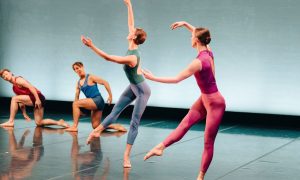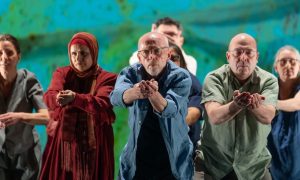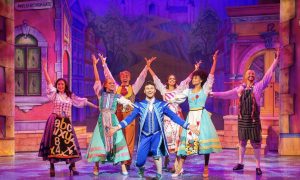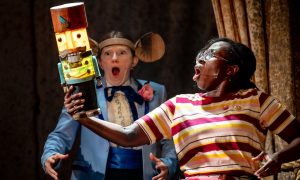The BA (Hons) International Contemporary Dance Practices is a ground-breaking collaboration between two prestigious international dance institutions, offering a unique and immersive experience for aspiring dance artists. This transnational program is a collaboration between two renowned dance institutions: London Contemporary Dance School at The Place in London and LASALLE College of the Arts in Singapore, and is the first of its kind offering a commitment to provide students with a diverse and comprehensive learning experience in Dance Higher Education.
The multicultural blend of London and Singapore serves as a catalyst for transcending boundaries in dance performance, practice and creation, and the program is designed to shape inventive and adaptable dance artists, and independent creators, preparing students to thrive in the ever-evolving dance arena.
Dance Informa had the opportunity to speak with correspondents from both locations: Melissa Quek, Head, School of Dance & Theatre, LASALLE College of the Arts (Singapore); and Suzanne Frost, Press and PR Manager from The Place UK (London), and with this Q&A we are excited to share with you deeper insights about this program.
Melissa, how does Singapore as a creative hub inspire artistic communities and networks?
“There are several factors that make Singapore unique as a creative hub. One is our location in the heart of Southeast Asia, which is ideal not only for its proximity to some of Asia’s most vibrant artistic communities but also for connecting with the rest of the world.

Students at LASALLE have participated in conferences, field trips and international collaborative projects that take them from Singapore to regional neighbours such as Malaysia, Indonesia and Japan, as well as further afield to France, Spain and the US. Singapore’s attractiveness as a study destination means that we also welcome students from all over the world, which creates a very diverse and cosmopolitan learning environment for artists.
Singapore itself is also a confluence of cultures, histories and influences, which find ample expression in the country’s thriving arts calendar. It would not be an exaggeration to say there are hundreds of arts events every month, many of them free and accessible digitally as well. There is also a high level of interest and participation in the arts among Singapore residents. The 2022 Population Survey on the Arts, conducted by the National Arts Council, found that Singapore’s arts attendance rate in Singapore is a very healthy 83 percent. All this adds up to an arts scene brimming with potential and possibilities for aspiring artists.”
Suzanne, how did the collaboration between these two leading international dance institutions transpire?
“Six years ago, we undertook some in-depth research into our student demographic and discovered that we had a number of students from Singapore. This discovery prompted Chief Executive Clare Conor and Baptiste Bourgougnon, Director of Undergraduate Courses and International Development, to visit Singapore and organise an admissions workshop there.
We established a connection with LASALLE College of the Arts, as some of our direct second-year entry students were coming from there. During our visit, we realised that our institutions share similarities, particularly in terms of ethos and approaches to contemporary dance education. Additionally, LASALLE is a University of the Arts, which aligns with our interest in collaborating with institutions that facilitate cross-arts collaborations.”
Melissa, with a cohort of 25 international students, how will this transnational program which offers such unique exposure to cultural, geographical and creative aspects enrich the next generation of artistic voices?
“This programme speaks to an increasingly integrated dance practice on a global scale. It aims to develop dancers with an awareness of global citizenry and an understanding of how the development of cultures impacts them as artists and people. Drawing from the multicultural, multi-ethnic mix of Singapore and London, the focus of the programme is on helping students discover new transcultural and intercultural expressive languages to become independent artists with international careers.
The programme networks students internationally and encourages them to hone their artistry and practice through research, creative projects and internships in these varied situations and contexts.”
Suzanne, what multicultural and professional influences will the students be exposed to?
“The idea is to use Singapore and London as multicultural cities, to expose students to a wide variety of cultures. The program will host internationally known dance artists who will share their work and creative processes with the students.
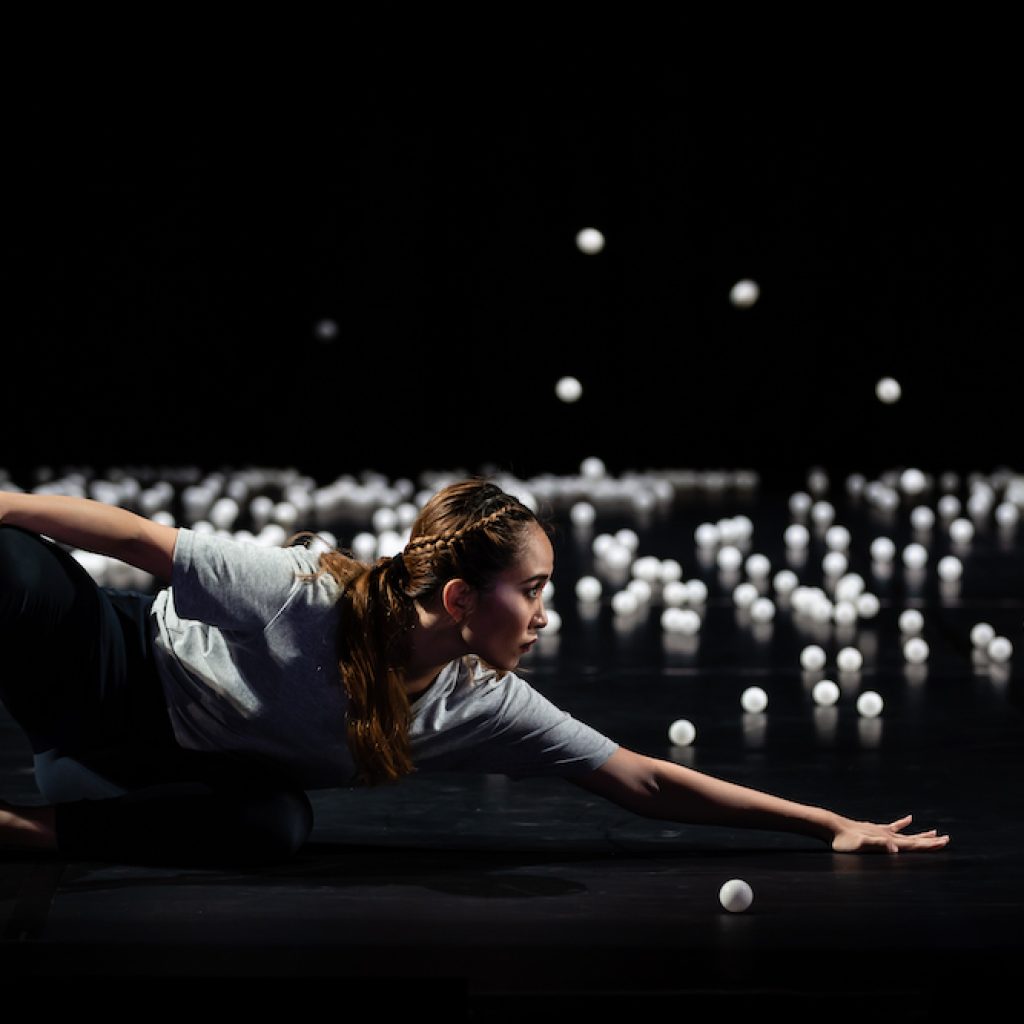
In London, teachers and artists from the European continent will participate, while in Singapore, teachers and artists from Southeast Asia will be involved. The program aims to bring international perspectives and transcultural approaches to the creative processes, both for performers and for independent creators. It will also cover approaches to collaborations across different cultures, including how to apply for funds in different cultural contexts and how to create artistic projects that bridge borders and cultures.”
Melissa, with the first year of study being based in London, and the final two in Singapore, how does each segment prepare students for their practice?
“The first year at London Contemporary Dance School will focus on inclusivity and cultural differences through encounters with dances of the African diaspora, South Asian dance practices and Euro-American practices. The dancer’s relationship with the body through anatomy and body conditioning and the relationship to music and history will be explored. The curriculum also includes workshops, guest teaching and performances that draw on the rich tapestry of work available in London.
The final two years will build on the artistry with explorations across cultures and a diverse range of dance theories and practices, particularly contemporary dance practices in Southeast Asia. The individual artistic voice is developed through collaborations with different disciplines and experiments in a range of media. Students will also research and design their own projects in a negotiated area of interest that develops their personal artistic and creative practice.”
Suzanne, what potential avenues can graduates expect to explore with this brilliant cross-continental delivery?
“This program aims to develop independent and experimental portfolio dance artists who are responsive to changes in the global dance industry. It also hopes to create international producers, choreographers and arts administrators.”
Melissa, in the past, who has been on the guest speakers and choreographers panel?
“Past speakers and choreographers who have visited LASALLE include Bill T Jones (US), Liz Aggiss (UK), Liu I-Ling (Taiwan), Joavien Ng (Berlin/Singapore), LASALLE alumni and Young Artist Award recipients Sufri Juwahir, Zhuo Zihao, Artists from Studio Wayne McGregor (UK), Nan Jombang Dance Company (Indonesia), Italy’s Motus Compagnia (Italy), Pichet Klunchun Dance Company (Thailand) and Liz Roche Company (Ireland).
The programme will source artists with diverse practices and backgrounds. For instance, artists such as Pichet Klunchun may draw from traditional dance forms to address contemporary issues. The aim is to ensure that students engage in a variety of contemporary dance approaches. The programme will also incorporate elements such as spoken word, site-specific performances, dance theatre works and inter-disciplinary collaborations.
When in London and Singapore, students will have the opportunity to work with guest artists from the UK, Europe, US and Asia. These include renowned dance artists from different stylistic backgrounds as well as alumni from both LCDS and LASALLE.”
Melissa, can you tell us about the opportunities students will be offered to develop and present their projects?
“In addition to developing their technique with a range of teachers from around the globe, students also have the opportunity to contribute and participate in the choreographic works of international guest artists.

Students will present work within the institution’s performance venues such as The Place and LASALLE’s Singapore Airlines Theatre, as well as larger public venues.
Students will also have opportunities to perform and participate in international student residencies and exchange programmes, for instance, Camping Asia in Taiwan organised by the Taipei Performing Arts Centre.
There will also be internship opportunities with various artists and companies. For example, students from LASALLE’s Diploma in Dance programme have completed internships with local dance companies such as Chowk, The Human Expressions Dance Company, Maya Dance Theatre, Deca Dance, The Arts Fission Company and Singapore Chinese Dance Theatre.”
Suzanne, can you tell us about the application process and how should applicants prepare themselves?
“The application process consists of two steps: The first step is to fill out an online application form. In this form, applicants will be asked to provide information about themselves, their dance and artistic interests, and their experience. They will also need to submit a link to a video. In the video, we ask applicants to introduce themselves, perform a solo between 3 and 5 minutes, as well as, give us some information about that solo.
Once we receive the application, we will invite the applicants to attend an in-person admissions workshop. This year, workshops will be held in London, Singapore, and Jakarta. We will also offer an online admissions workshop for those unable to attend in person. During the admissions workshop, applicants should expect to participate in improvisation exercises, contemporary technique training, and traditional Malay dance.
We are not specifically looking for applicants who are already familiar with all these dance forms. Instead, we are seeking students who are open to exploring new practices, willing to question assumptions, and ready to be challenged by exposure to different creative approaches. It is important for applicants to be curious and enthusiastic about collaborating with international artists and teachers, as well as showing a strong interest in gaining cross-cultural knowledge.
For further information, visit theplace.org.uk/lcds-courses/baicdp.
By Renata Ogayar of Dance Informa.







